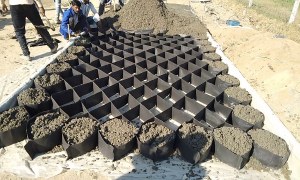🕑 Reading time: 1 minute
Thermal Cracking of Concrete and Prevention
Temperature difference within a concrete structure may be caused by portions of the structure losing heat of hydration at different rates or by the weather conditions cooling or heating one portion of the structure to a different degree or at a different rate than another portion of the structure. These temperature differences result in differential volume change, leading to cracks. This is normally associated with mass concrete including large and thicker sections (³ 500mm) of column, piers, beams, footings and slabs. Temperature differential due to changes in the ambient temperature can affect any structure.
Preventive Measures:
- Reducing maximum internal temperature.
- Delaying the onset of cooling.
- Controlling the rate at which the concrete cools by insulating the exposed concrete surface during first 5 days. This could be done by 50mm thick thermocol sheets encased with polythene sheet laid over concrete surfaces already covered with hessian cloth and water sprinkler keeping the hessian wet. The temperature gradient between core of concrete and the surfaces should not be allowed to be more than 150 C.
- Increasing the tensile strength of concrete.
- Reducing the concrete temperature at placement up to say 32 0 C.
- Using low heat of hydration cement or using fly ash replacement of part of cement.
- Keeping steel formwork warm by air heating during winter.
- Use of thermally insulating material as formwork.
- Keeping insulating formwork for longer duration.
- Low grade of cement, OPC 33 grade is the best.
- Cement with high C2S content.


